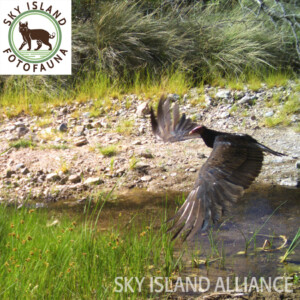 March 20th is the spring equinox of 2022, when the length of day equals that of night. This marks the first day of Spring for us in the Northern Hemisphere. As we (warm weather folks, at least) excitedly put the cooler winter months behind us and busy ourselves in our gardens, the beginning of spring is an opportunity to reflect on the changing wildlife community around us.
March 20th is the spring equinox of 2022, when the length of day equals that of night. This marks the first day of Spring for us in the Northern Hemisphere. As we (warm weather folks, at least) excitedly put the cooler winter months behind us and busy ourselves in our gardens, the beginning of spring is an opportunity to reflect on the changing wildlife community around us.
One such change takes place in the avian community. New species arrive daily in southern Arizona, either on their way further north from southern homes (e.g., rufous hummingbirds) or to stay for the breeding season (e.g., turkey vultures), while others leave for more northern latitudes (e.g., most yellow-rumped warblers). Such seasonal migration patterns have long fascinated (and baffled) humans. Indeed, Aristotle and Pliny the Elder pondered the seasonal changes in bird communities, believing that birds hibernated underground or transformed into different species each fall. Although we now know the birds we see this spring are not doing this, the truth is only slightly less remarkable.
All around the Northern Hemisphere, birds as small as hummingbirds are leaving their wintering grounds to fly across remarkable distances, which often span entire continents, to breed at more northern latitudes. Here in Tucson, Arizona, the turkey vultures soaring overhead may be returning from as far south as Colombia, and that rufous hummingbird on your feeder is probably just reaching the midpoint of a 4000-mile journey to breeding grounds in Alaska and Canada! Incredible.
So, on this Spring equinox, as you bask in the warming weather and make your plans for summer, stop to consider the incredible journeys some of the birds around you have made or are in the process of making. A great way to start noticing the seasonal changes in your local wildlife is to join our Fotofauna Program. Learn more here!
